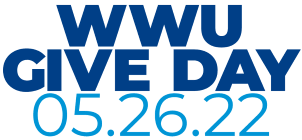Our Mission:
WWU Racing provides students the opportunity to develop as professionals. Students achieve this through taking on challenging projects, collaborating, problem solving, and then critiquing, analyzing, and reflecting on their work. Being involved in this work cycle gives students the tools which allow them to be more professional, well-rounded, and marketable employees. WWU Racing strives to foster an environment where they can help build the best product possible: the students.
Who We Are/What We Do:
WWU Racing is a team of students with varying majors and skillsets passionate about furthering their knowledge by developing a formula style race car. WWU Racing aims to build a car every academic year and compete with it at various FSAE competitions (see Competition section for more information). Engineering team members design, manufacture, and test the car while business team members focus on acquiring sponsors, managing budgets, creating media content, and participating in community events to share the team's mission and work with others. Being a part of WWU Racing provides team members with acumen to carry on to their respective careers.
Engineers learn hand fabrication, machining, CAD systems designing, simulations, and data analysis which helps to optimize our car. To ensure reliability, competitiveness, and safety, engineers use data driven justification for all design choices. WWU Racing proudly produces the vast majority of their components in house. Although time consuming, developing parts in house allows the team to gain an in depth understanding of the manufacturing process. The business team learns and practices budgeting, management skills, marketing, and PR skills that transfer to any business environment. All members, both engineering and business, learn the importance of goal setting, time management and communication. The team works cohesively and holds each member accountable for their work, building dependability that is highly sought after in young professionals.
How We've Handled COVID-19 and the Aftermath:
After losing access to on-campus work areas in March of 2020, we recognized this would be a good opportunity to transition from IC to EV, something we had been considering for several years. With access to on-campus lab spaces still uncertain for the upcoming year, we committed to the 2-year design cycle needed to develop an EV car, knowing we could count on having access to modeling and simulation software via remote access. While working remote, we began utilizing tools like Discord, Slack, and Google Drive to stay in touch and continue to work collaboratively.
After returning to campus full time in the fall of 2021, the team began to finalize design and eventually manufacture Viking 63, the first fully electric Formula SAE vehicle to ever come from Western Washington University.
Competition:
The Society of Automotive Engineers hosts a competition known as Formula SAE (FSAE) which is part of SAE's Collegiate Design Series (CDS). The series was designed to help students graduate with greater vehicle design knowledge and has been held for over 40 years. Western Washington University was one of the first few schools to participate in the series upon its inception. Multiple FSAE competition are held each year internationally, allowing students to test their engineering and business expertise. SAE provides safety and design rules that every team must follow. Although constraining, these rules still allow for innovative vehicle engineering and design.
FSAE cars are raced in autocross fashion primarily, requiring cars to possess excellent handling, braking and acceleration capabilities. The car is built and judged as a possible production prototype, so it must be built with performance, reliability, accessibility and affordability in mind. Therefore, engineers must choose materials that are durable yet cheap to source and design the car for longevity and ease of maintenance.
SAE also requires students to demonstrate their knowledge in business events. Teams must submit a cost breakdown of their vehicle, and are judged on accuracy as well as the ability to justify additional expense with the value it adds to the car. Each competition also issues a real cost scenario and a business prompt, where teams must create and present solutions for the given situations.
Donation Usage:
Donations to the team are used to push design boundaries and take on new, ambitious projects. This year, WWU Racing seeks to take Viking 63 to the start line, the first fully electric Formula SAE vehicle ever produced by WWURacing. Some highlights to this design include an Emrax 228 LC MV motor and Cascadia Motion PM100DXR motor controller, in-house designed battery packaging, and redesigned corner packages. All choices made by WWU Racing during are viewed from a cost-to-benefit ratio, based on the learning experiences that each project provides to students. Money that is raised help us to push our boundaries in design and all other phases of our year, including manufacturing, testing, and competing.
How Your Donation Helps:
While WWU Racing is an on campus club, it is run like a startup engineering company. The team must raise all their own funds to not only build a race car but to also help build the team and the amount of physical assets we have at our disposal. These funds come from local sponsors, community outreach, events, donations, grants, and from within Western Washington University. Every dollar that is given to the team goes directly to allowing a student to build a part of the car or the team, better preparing them for the real world. Each member of the team will use this money to get real word experience in a safe and nurturing space that allows them to push their own limits without fear of consequence.

